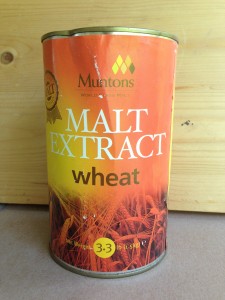
Brewery-grade malt extract is made from wort that has been boiled. All that you need to do to turn it into wort is dissolve it and sanitize it. (Canned extract should already be sanitary.)
In the early days of modern homebrewing, many 5-gallon (19-L) homebrew recipes called for boiling several pounds (a few kilograms) of malt extract in as little as 1.5 gallons (5.7 L) of water for 60 minutes. This thick wort would then be diluted to 5.0 gallons (19 L) in a bucket or carboy fermenter. If you followed these instructions, you ended up with beer (and you were psyched) — but you noticed that the color was frequently much darker than a comparable commercial beer.
As the sophistication of homebrewing knowledge increased, brewers were told to address the problem by boiling larger volumes of wort. (Buying fresh extract also helped.) This helped to a degree, but homebrewers wishing to make very pale beers were often left disappointed.
In the early 2000s, homebrewers started withholding a portion of their malt extract until the end of the boil. The idea behind this was that brewery-grade malt extract was made from wort had already been boiled. It did not require the long boil that all-grain wort does to coagulate the break material. All that is required is some time exposed to heat to sanitize it. In addition, by boiling your hops in low-gravity wort — made from steeping grains and small amount of malt extract — your hop utilization would improve when compared to boiling them in a very high gravity wort. This way of brewing — sometimes called the late extract addition method — quickly became standard practice.
Although everyone does this now, new brewers may wonder why and intermediate brewers may wonder about some of the variables in the process. With that in mind, here is a rundown of adding malt extract late in the boil and how it influences the character of your beer.

Recent Comments